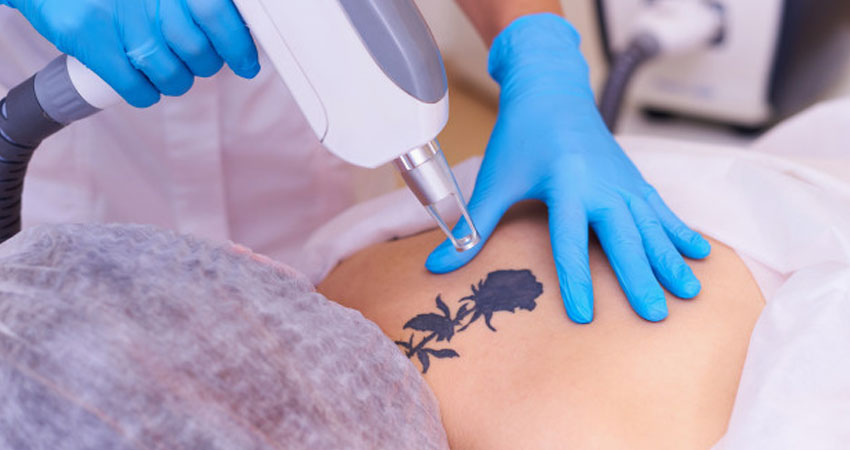Tattoo Removal Treatment in chandigarh
Tattoo removal treatment at a reputable clinic like Chandigarh Laser Clinic can be an effective solution for those seeking to remove unwanted tattoos. The process typically involves the use of laser technology to break down the tattoo ink in the skin, allowing the body's natural healing processes to gradually eliminate the pigment.
Before undergoing tattoo removal treatment, it is important to consult with a qualified professional at the clinic. They will evaluate your tattoo and determine the best approach based on factors such as the size, color, and location of the tattoo, as well as your skin type and overall health.
During the treatment, the laser device emits targeted pulses of light energy onto the tattooed area. The energy is absorbed by the tattoo ink, causing it to shatter into tiny fragments. Over time, the body's immune system will flush out these fragments, resulting in a fading of the tattoo.
It is essential to follow the aftercare instructions provided by the clinic to promote proper healing and minimize the risk of complications. Multiple sessions may be required to achieve satisfactory results, as complete tattoo removal often requires several treatments spaced several weeks apart.
While tattoo removal treatment can be successful, it is important to note that there are certain limitations and potential risks involved. These may include temporary discomfort, redness, swelling, blistering, or scarring. It is crucial to choose a reputable clinic like Chandigarh Laser Clinic with experienced professionals to minimize these risks and ensure the best possible outcome.
If you are considering tattoo removal, I would highly recommend scheduling a consultation with a qualified clinic to discuss your specific situation and goals. They will be able to assess your tattoo and provide you with personalized advice and treatment options.
You will Be Offered The Following Treatments:
- Removal of any kind of tattoos
- Removal of birth marks
- Removal of wound marks
- The laser technique we use to remove the tattoo absorb the tattoo ink and break it up into smaller particles which are later on eliminated by the body’s immune system. With successive repeat treatments the tattoo gradually disappears.
Pain Free tattoo removal treatment in chandigarh
Tattoo removal procedures can vary in terms of pain or discomfort experienced by individuals. Some people compare the sensation to getting a tattoo, while others describe it as similar to the feeling of a rubber band being snapped against the skin. The level of discomfort can also depend on the type of tattoo removal method chosen.
Certain procedures, such as surgical excision or dermabrasion, may require the use of general anesthesia or a local anesthetic to minimize any pain or discomfort. Laser tattoo removal, on the other hand, may involve the application of a topical numbing cream or the use of cooling devices during the procedure to reduce discomfort.
Candidates for tattoo removal generally include individuals who have unwanted tattoos and are in good overall health. It is important for candidates to have realistic expectations for the procedure and to understand the potential risks and side effects associated with it. Smoking can also affect the healing process, so quitting or reducing smoking is beneficial before undergoing tattoo removal.
People consider tattoo removal for various reasons. Some common reasons include no longer liking the tattoo, workplace policies that prohibit visible tattoos, or the tattoo serving as a reminder of someone or something negative in their life.
There are different types of tattoo removal procedures available:
1. Laser tattoo removal: This method uses focused beams of light to heat up the ink particles in the skin, breaking them down into smaller fragments that can be eliminated by the body's immune system. Multiple sessions may be needed for complete removal.
2. Dermabrasion: This surgical procedure involves using a special tool to remove the outer layers of skin containing the tattoo ink. Local or general anesthesia is often used, and proper wound healing is necessary afterward.
3. Chemical peels: Chemicals such as trichloroacetic acid are applied to the skin to cause exfoliation and remove the tattoo ink. This method requires multiple sessions and may not be suitable for all tattoo colors.
4. Surgical excision: Small tattoos can be surgically cut out, and the remaining skin is stitched together. This method might not be effective for larger tattoos.
5. Tattoo removal creams: These creams can be applied at home to fade tattoos gradually. However, they are not as effective as other methods and may cause skin irritation or damage.
In a laser tattoo removal procedure, you will typically undergo the following steps:
- Protective eye shields will be provided to ensure safety during the procedure.
- A test will be done to determine the most effective energy level for your specific tattoo.
- The laser handpiece will be placed on the surface of the skin and activated to emit pulses of laser light over the tattooed area.
- The number of pulses required depends on the size and complexity of the tattoo.
- Multiple sessions are usually needed, and each session will cause the tattoo to become lighter.
After each session, your healthcare provider will provide instructions on how to care for your skin and promote proper healing. It's important to consult with a trained and certified professional to discuss the best tattoo removal option for your specific situation and to address any concerns you may have.



